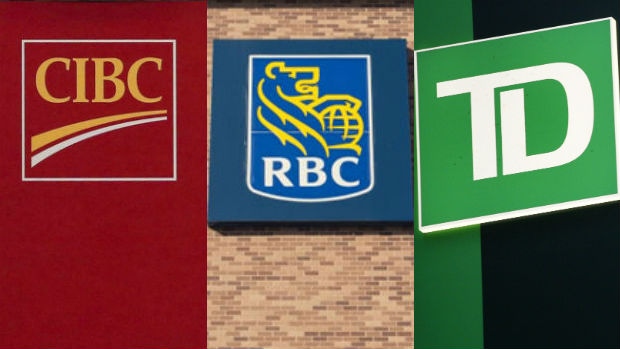May 26, 2016
Canadian banks show resilience amid pain in the energy industry
Reuters

Royal Bank of Canada, Toronto-Dominion Bank and Canadian Imperial Bank of Commerce are all topping profit estimates even as the energy industry downturn takes a toll on their loan books.
Gross impaired loans to the oil and gas sector surged at all three lenders – but at least one of them is taking matters into its own hands to help offset that weakness. RBC says “fee-based revenue growth” helped drive record earnings in its core banking division.
Here’s a breakdown of all three banks’ earnings.
RBC
RBC said on Thursday bad loans increased by $583-million, or 19 per cent, in the second quarter from the quarter before, largely due to a rise in credit to oil firms that had turned sour. Canada’s biggest banks are seeing an increase in energy clients struggling to pay back loans following a sharp decline in the price of oil. Bank of Montreal said on Wednesday it had set aside more funds to cover losses.
Despite the warning, RBC reported a 7 per cent increase in second-quarter profit from the same quarter a year earlier, which it said reflected strength across its businesses.
Canada’s biggest bank by market value said net income excluding one-off items for the second quarter to April 30 was $2.6-billion, or $1.66 per share, compared with $2.4-billion, or $1.61 per share, a year earlier.
Analysts on average had expected earnings of $1.64 per share, according to Thomson Reuters I/B/E/S.
“RBC continues to be well positioned going forward given the strength of our diversified business model, our prudent risk management and our ability to effectively manage costs,” said Chief Executive Dave McKay.
CIBC
CIBC reported a 3.5 per cent rise in quarterly profit, helped by growth in its retail and business banking division.
The bank’s net income rose to $926-million, or $2.35 per share, in the second quarter ended April 30 from $895-million, or $2.25 per share, a year earlier.
CIBC set aside $284-million to cover bad loans, which is 44 per cent more than a year earlier on an adjusted basis, mainly due to bigger losses in the oil and gas sector and higher writeoffs in the card and personal lending portfolios.
Other major Canadian banks are also expected to set aside more funds to cover bad loans this quarter as the oil and gas industry continues to struggle in the wake of lower crude prices.
Bank of Montreal said on Wednesday bad loans to energy companies more than doubled in the second quarter and that it set aside more funds to cover losses.
CIBC’s net income from retail and business banking division rose about 12 per cent to $652-million from a year earlier.
However, net income from its wealth management unit fell by about 12 per cent.
TD
TD, Canada’s second-biggest lender, reported a 10.4 per cent rise in quarterly profit on Thursday, helped by growth in its retail banking business.
The Toronto-based bank’s net income rose to $2.05-billion, or $1.07 per share, in the second quarter ended April 30 from $1.86-billion, or 97 cents per share, a year earlier.





